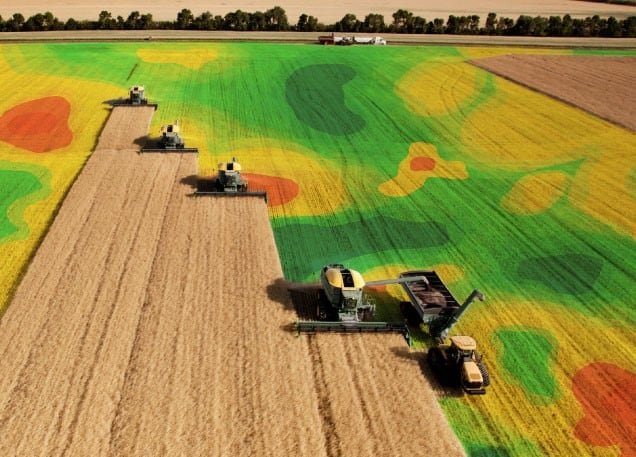What is GIS agriculture?
GIS in horticulture has been helped by the overall headway of innovation in the beyond a couple of many years.
The utilization of GIS in horticulture is tied in with dissecting the land, imagining field information on a guide, and giving that information something to do. Controlled by GIS, accuracy cultivating empowers informed choices and activities through which ranchers benefit from every section of land without harming the climate.
Discussing devices, geospatial innovation in agribusiness depends on satellites, airplanes, robots, and sensors. These instruments are utilized to make pictures and interface them with maps and non-envisioned information. Thus, you get a guide including crop position and wellbeing status, geology, soil type, treatment, and comparable data.
There are a few uses of geoinformatics in horticulture. We should examine some of them.
From this article, you'll find out about the accompanying applications and utilization of GIS in agribusiness:
Yield expectation
Crop wellbeing checking
Domesticated animals observing
Bug and nuisance control
Crop yield forecast
Exact yield expectation can assist state-run administrations with guaranteeing food security and organizations estimate benefits and plan financial plans. The new advancement of innovation interfacing satellites, detecting, huge information, and AI can empower those forecasts.
Perhaps the most significant procedure in this field is Convolutional Neural Networks (ConvNets or CNNs). A ConvNet is a profound learning calculation that is instructed to distinguish the efficiency of a harvest. Designers train this calculation by taking care of it pictures of harvests whose yield is as of now known to find efficient designs. CNN has an exactness of around 82%.
Crop wellbeing observing
Checking crop wellbeing across numerous sections of land physically is the most un-effective choice. This is where remote sensing joined with GIS in cultivating acts of the hero.
Satellite pictures and information data can be matched to evaluate natural circumstances across the field, like mugginess, air temperature, surface circumstances, and others. In view of GIS, accuracy cultivating can overhaul such an assessment and assist you with concluding which yields require more consideration.
A more modern methodology utilizes imaging sensors on satellites and air vehicles to really take a look at the temperature of harvests. At the point when the temperature is better than average, this could demonstrate an illness, invasion, or lacking water system.
Brain networks like CNN, Radial Basis Function Network (RBFN), Perceptron, and others can be useful in evaluating crop wellbeing as well. The calculations can break down pictures for unfortunate examples.
Animals observing
The least difficult utilization of ranch GIS programming in animal farming is the following the development of explicit animals. This assists ranchers with tracking down them on a homestead and screening their wellbeing, richness, and nourishment. GIS benefits that permit you to do that involve trackers introduced on creatures and a cell phone that gets and pictures data from those trackers.
Here's one model. You need to screen the heaviness of your meat dairy cattle. Every creature has a tracker on its ear or neck. Each time it steps on the computerized scales, the scales read the ID of that creature and dole out another worth to that ID in the framework.
You don't have to enter that information physically. In the meantime, assuming there's a disturbing change in the creature's weight, you can rapidly see that as a creature and actually take a look at its wellbeing.
There are likewise seriously fascinating use instances of ranch GIS programming, for example, forestalling wolf-cows experiences. There are uncertain spatial particulars that influence the conveyance of untamed life in space, including wolves. We could diminish unfortunate experiences by understanding those unpretentious particulars, which should be possible by the joined utilization of AI and GIS in farming.
Bug and bug control
The intrusion of hurtful bugs and vermin, or invasion, causes weighty harm to agribusiness. A look from above can empower exact, convenient cautions to forestall that.
However, even high-goal pictures probably won't give noticeable early indications of invasion.
The option would utilize AI. You foster a brain organization and train it utilizing profound learning calculations. Through this preparation, you feed the brain network pictures of invaded land and the organization figures out how to find tests that demonstrate invasion. From that point forward, you feed it satellite pictures of the land you need to be investigated.
As referenced above, you can likewise utilize remote detecting alongside geospatial innovation in agribusiness to really take a look at the temperature of the yields. Plants answer pervasion by warming up as they quit getting sufficient water or sustenance.
Water system controlWatching out for huge fields to ensure that each harvest gets sufficient water is a difficult errand, yet one effortlessly handled by geoinformatics in horticulture.
Airplanes and satellites outfitted with high-goal cameras take pictures that permit AI calculations to work out the water pressure in each yield and spot visual examples behind water deficiencies.
Match those pictures with water conveyance framework guides, and you will figure out how well your ebb and flow water system conspire is performing.
EndAssuming that you peruse the Internet for use instances of GIS in farming, you will find articles and studies tracing all the way back to the mid-nineties. The targets of agribusiness haven't changed much from that point forward — nor have the issues that GIS is supposed to tackle.

